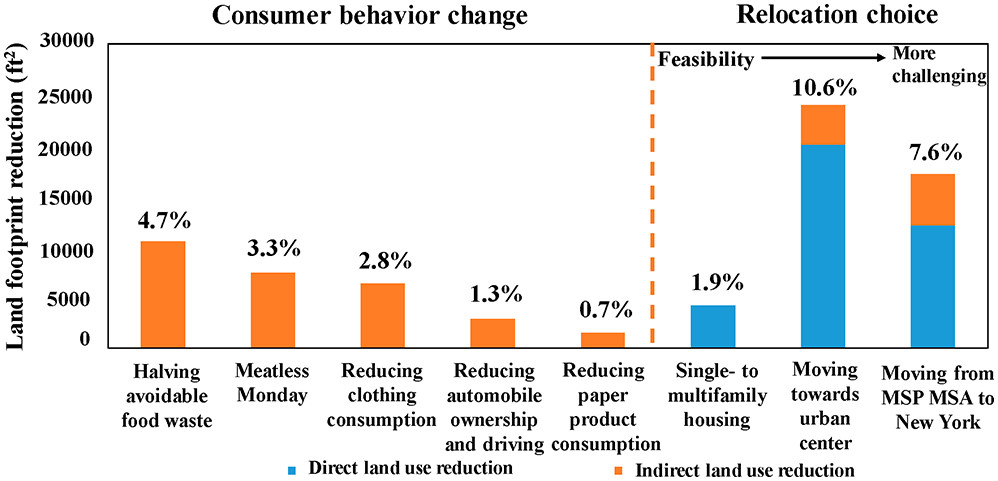Impact of Locational Choices and Consumer Behaviors on Personal Land Footprints
Impact of Locational Choices and Consumer Behaviors on Personal Land Footprints
- February 2020
- Peer-Reviewed Articles
- Multiple
Zeng, L. & A. Ramswami (2020). Impact of Locational Choices and Consumer Behaviors on Personal Land Footprints: An Exploration Across the Urban–Rural Continuum in the United States. Environmental Science & Technology, 54(6), 3091-3102.
ABSTRACT: Land is a scarce resource. We develop consumption-based land footprints (CBLF) for urban and rural U.S. residents to evaluate new levers for reducing land-demand by combining (1) direct land-use for human settlements including housing, (2) indirect land-use associated with personal consumption, for example, food and clothing. Results show that an average urban resident’s indirect land-use (199 176 ft2/capita) is ∼23 times the direct land-use (8519 ft2/capita), for a total urban CBLF of 207 695 ft2/capita. Rural residents have a slightly higher (∼6%) indirect land-use and ∼10 times larger direct land-use compared to urban. Because in both cases, indirect land-use is much larger than direct, a strategic mix of individual actions including halving food waste (−4.7%), one-day weekly plant-based diet (−3.3%), reducing clothing consumption (−2.8%), and others, can together reduce CBLF by −12.8%. Meanwhile, housing and locational choices across the urban–rural continuum evaluated for the median-density Minneapolis-St. Paul Metropolitan Statistical Area (MSP MSA) yield CBLF reductions from −1.9% (from single- to multifamily housing) to −10.6% (from rural to the urban core). The analysis demonstrates that consumer behavior changes could rival housing/locational choices in order to reduce personal CBLF. Our method of combining input–output analysis with parcel data could be applied in different regions to provide customized information on CBLF mitigation strategies.
Download the full article here.





